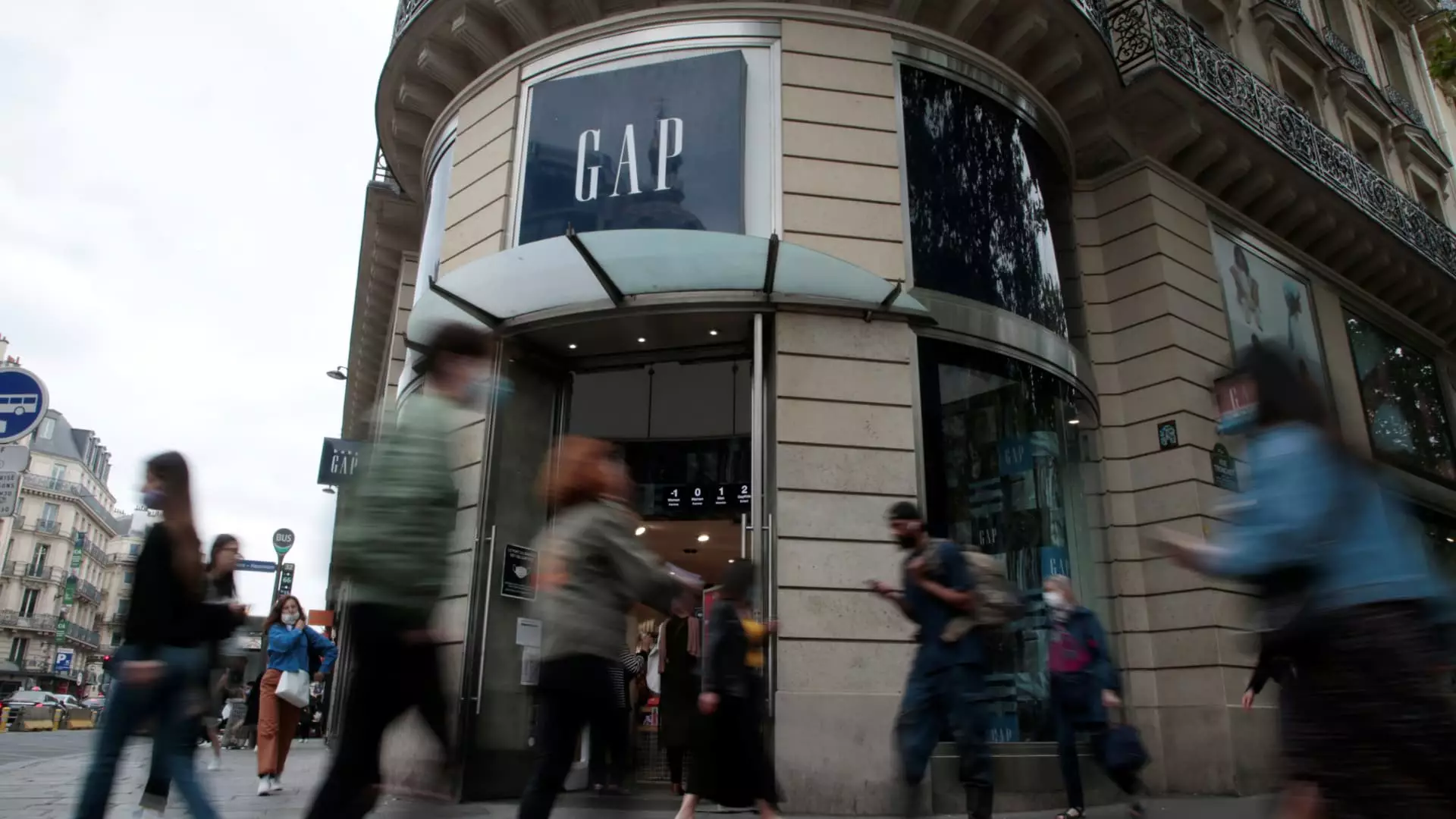In a landscape defined by global supply chains and international trade, the latest developments at Gap Inc. reveal the stark reality of doing business in today’s economy. The company’s projections suggest that impending tariffs could impose a staggering $250 million to $300 million impact on its bottom line. These tariffs—30% on imports from China and 10% on other global imports—are not just numbers on a sheet; they entail profound implications for operations, pricing strategies, and ultimately, consumer choices. What is particularly striking about Gap’s response is the juxtaposition of proactive supply chain strategies against a backdrop of dire economic forecasts. By diversifying its suppliers and aiming to decrease its exposure to China, Gap hopes to mitigate its losses down to a range of $100 million to $150 million. While admirable, is this solution adequate in dealing with the uncertainties posed by geopolitical shifts?
Brand Resilience Amid Adversity
Despite the disquieting implications of tariffs, CEO Richard Dickson remains a beacon of optimism. His assertion that “strong brands can win in any market” reflects a center-right liberal ethos that emphasizes resilience and innovation over despair. It is refreshing to see corporate leaders not shy away from challenges but, instead, approach them with an attitude of potential growth. Gap beating Wall Street expectations on earnings and revenue is a testament to the company’s still-vibrant core. A reported net income of $193 million and a slight uptick in sales show that Gap can still navigate stormy waters, at least for now. However, the insidious nature of a trade war could erode consumer confidence, leading to a prolonged slump that even the strongest brand could find difficult to withstand.
Mixed Quarterly Performance
Gap’s fiscal data informs a complex narrative where favorable growth in Old Navy and the flagship Gap brand contrasts sharply with the underwhelming showing of athleisure line Athleta and Banana Republic. The reported growth in sales for Gap’s primary lines—3% for Old Navy and a remarkable 5% for Gap itself—underscores a successful turnaround strategy that Dickson has enacted. Yet, juxtaposed against this success are the declines at Banana Republic and Athleta, with sales falling by 3% and 6%, respectively. This disparity raises an uncomfortable question: How long can the success of a few brands sustain the ailing overall portfolio? The steadfast decline in specific brands challenges the narrative of corporate resilience and highlights a crucial aspect of modern retail—consistency is king.
Anticipated Economic Climate and Strategic Adjustments
Looking to the future, Gap braces for a flat sales outlook for the current quarter, against a backdrop of stagnant economic growth. The guidance suggests consumer sentiment may be faltering, and with it, Gap’s aspirations for annual sales growth of 1% to 2% feel increasingly conservative. Such guarded projections imply an awareness of potential pitfalls, including the looming threat of reciprocal tariffs, especially from key trading partners like Vietnam. Unlike mere operational challenges, these tariffs represent a potential misalignment with the fundamental goal of maximizing shareholder value. All in all, Gap’s management is facing a tightrope act—balancing cost-cutting and brand focus while navigating a complex web of tariffs and international relations.
The Larger Implications of Trade Wars
The ramifications of Trump’s trade war extend far beyond Gap, echoing throughout the industry and raising questions about the feasibility of current business practices. The expectation that strong brands will thrive in such an unstable environment may overlook larger economic realities. Will American consumers continue to support brands that they perceive as complicit in contributing to economic woes? Consideration must be given to how consumer sentiment and behavior can easily tip the scales, making it risky for brands to depend solely on historical strength and market share. The volatility stemming from international trade disputes could catalyze a dramatic shift in consumer loyalty—substituting quality for affordability as price sensitivity heightens.
Gap may be a titan in the retail industry, yet the ever-evolving conditions of global trade come knocking with formidable force. As the company strategizes to navigate this tumultuous landscape, the question remains: Are strong brands enough to counteract the risks associated with tariffs and fluctuations in international trade? The stakes are high, and the ramifications for an entire industry could hinge on Gap’s next strategic moves. The balance between maintaining a strong brand and addressing consumer concerns will prove pivotal as we plunge deeper into this trade era.


Leave a Reply